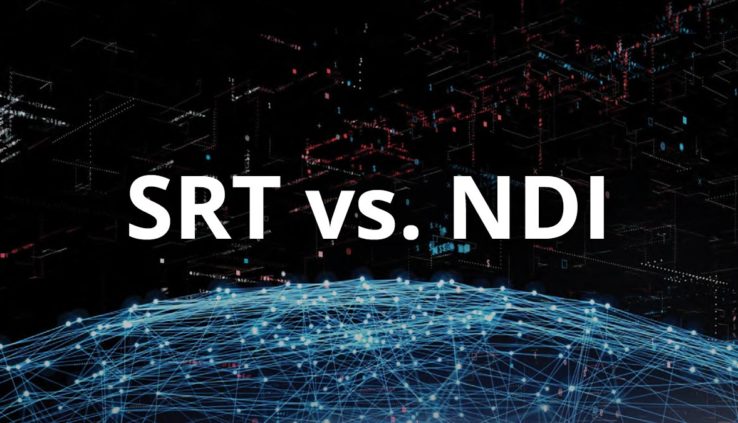SRT vs. NDI for remote video production
By Jamie G
Marta Chernova of Epiphan does a great job going over the differences of SRT and NDI and when it’s best to use them in a recent blog post.
“Secure Reliable Transport (SRT) and Network Device Interface (NDI) are both free AV-over-IP solutions that offer high-quality, low-latency video transport, yet they serve different applications”
Marta Chernova
SRT
SRT is an open-source video transport protocol that enables high-quality, low-latency video delivery across the public Internet. For SRT streaming you need an SRT encoder, such as the Epiphan Pearl Nano, the Pearl Mini, and the Pearl-2. SRT streaming is a great solution for remote video contribution.

Check out this video by Epiphan on SRT
NDI
NDI is a software standard that allows your to transmit and receive broadcast-quality video with low latency over a local area network. NDI streaming is used for sending and receiving devices to be on the same network. The new release of NDI 5 allows you to specifically send video over the public internet.
“The release of NDI 5 introduces a feature-rich set of tools that make NDI-based video production and contribution possible over the public Internet. For example, the NDI Bridge tool connects two remote NDI networks together, while the NDI Remote tool allows anyone to contribute live audio and video from a camera phone or a web browser using a URL.
Marta Chernova
SRT and NDI
Sometimes using SRT and NDI together make sense. Epiphan gives the example of a large production studio that receives remote video contributions, like a TV studio hosting a remote interview, or a hybrid conference event. In this scenario it would make sense to bring in the remote video contribution over SRT and use NDI to transmit video locally inside the studio.

Check out the full article here!
Learn more about Epiphan here!

